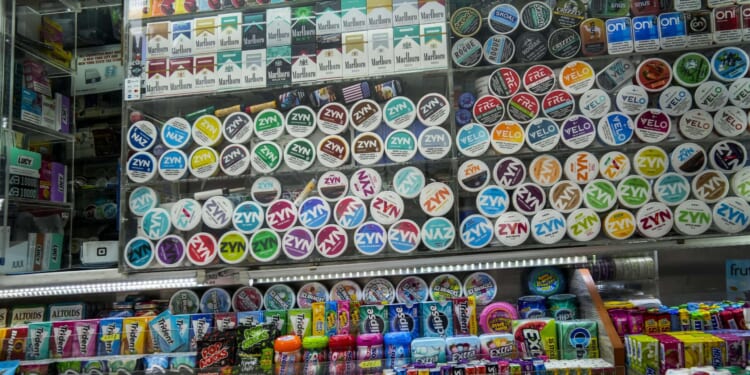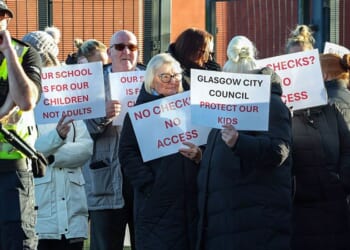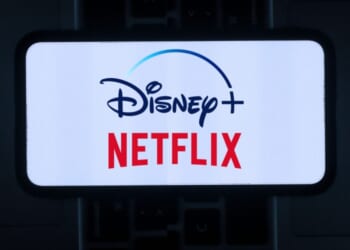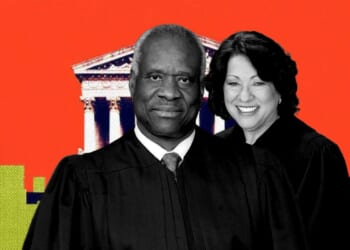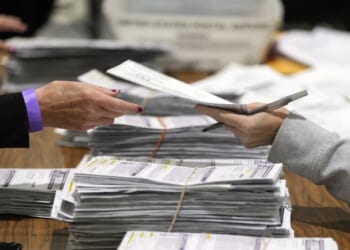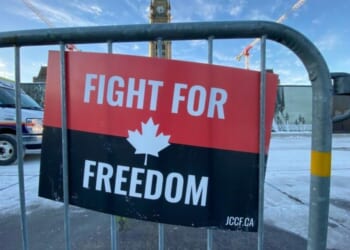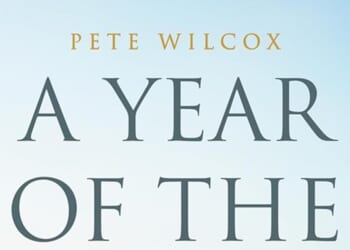The gas station across the street from my house in the suburbs of Washington, D.C., is filled with most of my guilty pleasures: energy drinks, candy, chips, and an entire wall of nicotine products—including many counterfeits.
I’m a regular there and friendly with the manager. When I spotted the knock-off nicotine pouches that he proudly displays next to the cash register, he mentioned that he imports the products from Sweden.
As a well-read policy nerd on nicotine regulations—and a fan of Zyn, a popular brand of tobacco-free nicotine pouches—I knew that “Guac Shake” flavor wasn’t an authentic brand product. These were sinister impostors of a brand that my friends and I trust.
I doubt my gas station manager is aware of the problems with the products he’s selling. I assume he, like most, is blissfully ignorant of the fact that these Zyn knockoffs are not the high-quality products he claims. Regardless, he clearly understands what his customer base wants: options.
It takes a discerning eye and an understanding of the U.S. Food and Drug Administration’s (FDA) approval process to know what products are being misrepresented. One shouldn’t have to be a nicotine policy wonk to know what’s a safe product. By dragging its feet on approving new products, the current regulatory regime has kept popular quality products out of the legal market while allowing counterfeits to overwhelm store shelves.
Consumers have been spoiled by an abundance of choice in everything we consume (there are over 300 flavors of Kit Kats, for goodness’ sake), and we want options when it comes to the flavors and nicotine percentages of our pouches. The FDA clearly doesn’t agree.
Despite these products being available in the United States for over a decade, the FDA has approved only 20 nicotine pouch products, all variants under the Zyn brand, to be sold on the American market. To put this in perspective, the FDA has approved over 17,000 tobacco products. When it comes to nicotine pouches, only unflavored and minty varieties are allowed, despite far more unapproved options regularly available at convenience stores.
A 2024 study had researchers digging through the trash in the D.C. area and found that 99.5 percent of the 2,000 collected vapes were counterfeit and not approved by the FDA. This phenomenon is also happening with nicotine pouches. From an informal polling of my Gen Z friends who use nicotine pouches, I found that they were overwhelmingly unaware that the products they were consuming were unregulated.
There is a continuum of risk in nicotine and tobacco products, with cigarettes obviously being the most harmful to one’s health. While nicotine pouches have become the new thing to hate on as they have gained popularity, they are one of the safest nicotine products on the market. The FDA has gone on a crusade against counterfeit vape products, but has failed to take steps to approve safer and more popular products. Without taking this important step, the illicit market will continue to meet the needs of consumers, even to their detriment.
Gas station managers are not to blame for the rise of counterfeit nicotine products throughout our country. Neither is Zyn, the only company that has received FDA approval to market nicotine pouches in the U.S. (and is understandably upset with the influx of counterfeit products, as they disparage the brand’s public image and customer confidence in their products). That blame lies solely with the inaction and complacency of the FDA.

